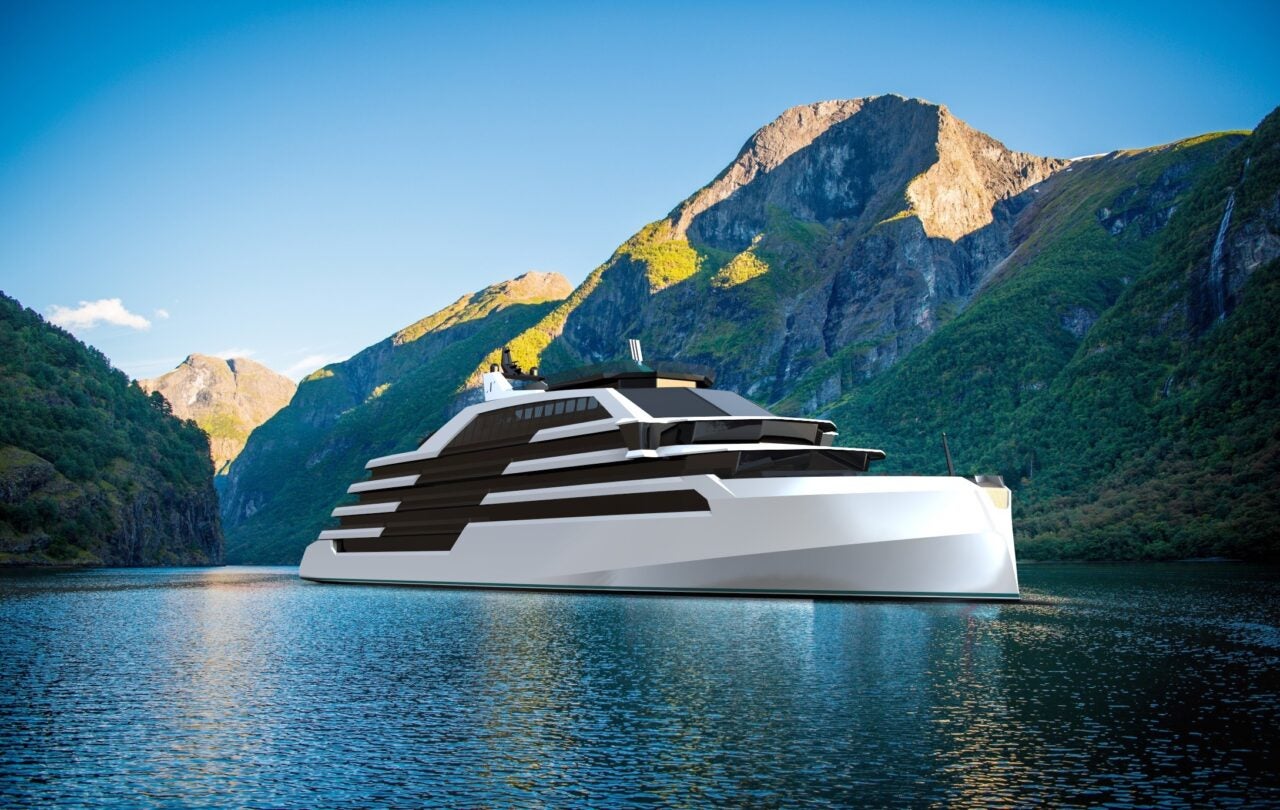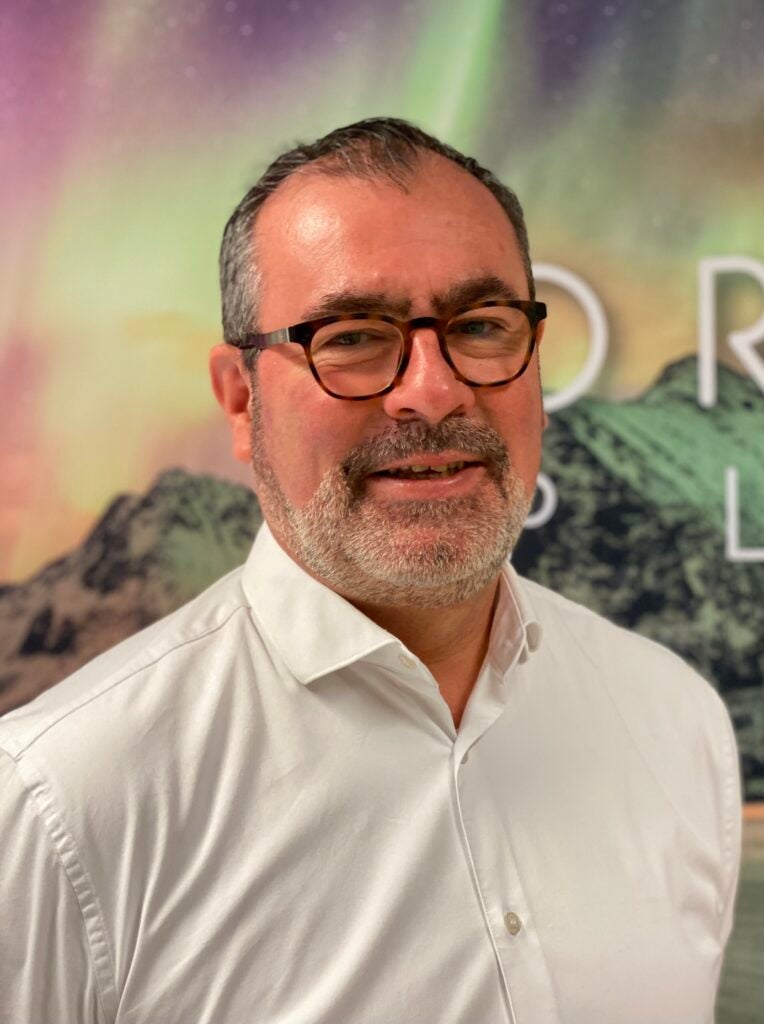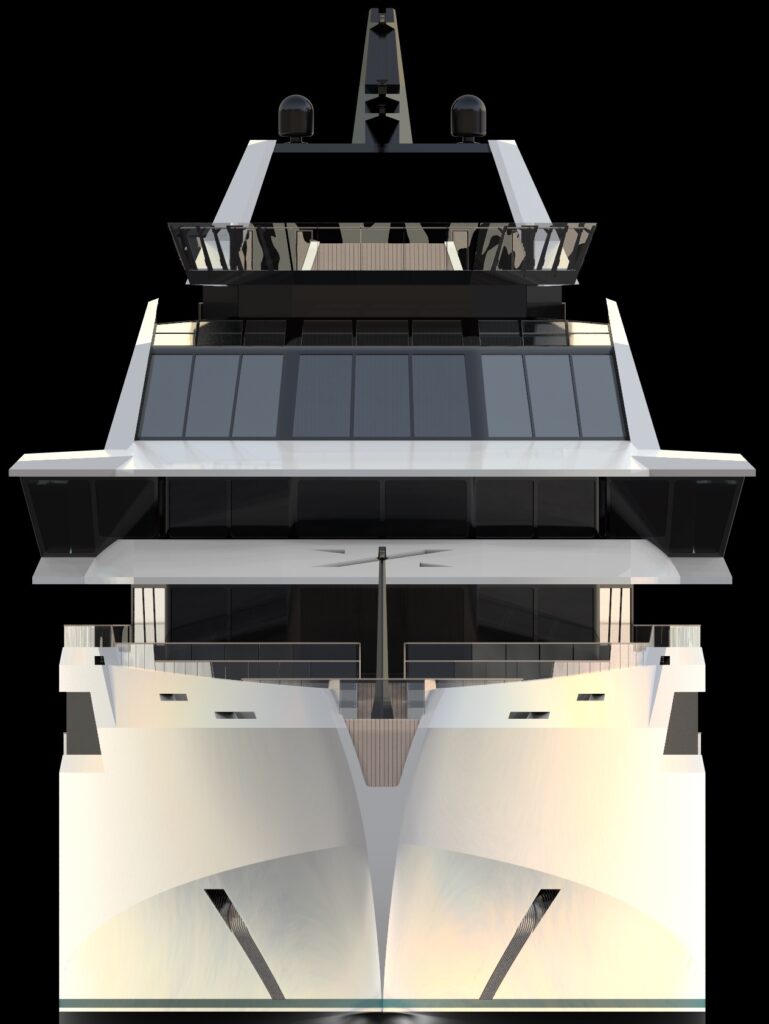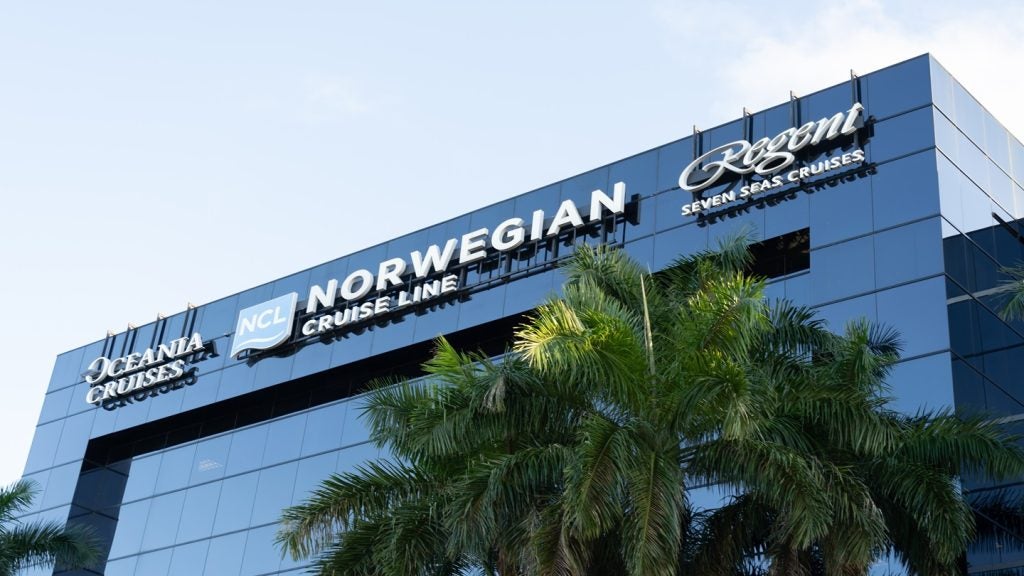
The cruise industry frequently comes under fire for its environmental impact, as giant titan ships cruise through the oceans, full of passengers eager to explore remote locations. Acting as a change of pace from the norm, Norwegian company Northern Xplorer has recently revealed a new, environmentally friendly cruise ship design. Frankie Youd finds out more.
Norway is noted for its pioneering methods when it comes to zero-emission solutions, from battery powered vessels to fjord-powered cruises. Showcasing another environmentally conscious design is Norwegian company Northern Xplorer, which has recently unveiled its new concept cruise ship, the MM 130.
The concept cruise ship – which will eventually be a fleet of 14 – has been designed with the environmental impact at the forefront of its design. The ship boasts electric propulsion, hydrogen fuel cell technology, wind power, solar power, and rechargeable battery solutions. The ship will also be self-sufficient, making its own clean fuel.
Paired with a focus on the environmental impact, the company has also focused on the new zero-emission regulations that have been set out for world heritage fjords, which are to be implemented in 2026.
The new regulations see the number of ships and passengers within certain heritage sites being dramatically decreased, which has seen Northern Xplorer developing this ship to be smaller – making it more eco-friendly.
Frankie Youd talks to Rolf A. Sandvik, CEO of Northern Xplorer, to find out more about the design of the new ships as well as how the concept for the design came to be.
How well do you really know your competitors?
Access the most comprehensive Company Profiles on the market, powered by GlobalData. Save hours of research. Gain competitive edge.

Thank you!
Your download email will arrive shortly
Not ready to buy yet? Download a free sample
We are confident about the unique quality of our Company Profiles. However, we want you to make the most beneficial decision for your business, so we offer a free sample that you can download by submitting the below form
By GlobalData
Frankie Youd: How did the concept for the cruise ships come about?
Rolf A. Sandvik: Tourist overpopulation of marquee ports is a major challenge facing the cruise industry. The focus on bigger and bigger ships in the last 20 years or so is unsustainable. It has outstripped what shoreside infrastructure can absorb without negative effects on the visitor experience.
Being one of six or seven thousand tourists piling into a small village, not only in Norway but also elsewhere in the world, doesn’t bring you closer to the people who live there; most of us just feel alienated. Ships should be suitably sized to the ports they visit. That was a major motivator for our Northern Xplorer (NX) team.
We also saw increasing demand from guests for a more exclusive, intimate experience of countries and cultures. Exploring for us means getting closer to local culture and habits. Guests are also becoming more aware of the carbon footprint of their holiday spend. So, there is a mismatch between these trends and what has been available.
There has also been a clear lack of focus on zero-emissions in vulnerable areas. The new regulations for emission-free maritime traffic in Norway’s world-heritage fjords from 2026 provided the kickstart for the project. This market opportunity was not covered by the major cruise lines.
What is the main goal for these ships? What is their intended route?
Our focus is on the Nordic region – the Norwegian coast, the east and west coasts of Sweden, and the Baltics.
We’ve planned our routes based on what shoreside infrastructure becomes available. This is key for zero-emissions, because we need power on the quayside for battery charging. We are ahead in this area in Scandinavia, but similar infrastructure will increasingly be rolled out in Europe as well.
Our principal ports in the Nordics will be those with railroad connections. We of course realise guests will fly into major airports, but after that we want them to experience travel with the least imprint.
We plan to implement a ‘Train-Sea’ program between turnaround ports, so guests can ride, for example, the Bergensbanen, which has been voted the world’s most beautiful train journey. We also hope to implement electric buses to transport guests.

The smaller ports can be anything in between. There are a multitude of villages and towns that are today overlooked by the cruise industry – we want to take a deep dive and allow guest to ‘Xplore’ the unique charm of these destinations.
We intend to expand the geographical reach in time. We are planning for 14 ships, so the natural growth trajectory for us is Europe, for example Croatia, Monaco, the French Riviera, and other points in the Mediterranean, where green energy is available or stricter emissions regulations are introduced.
What are some of the most noticeable benefits of the design?
The size of the ships is key. Accommodating up to 300 guests in 150 cabins, served by a crew of around 100, means guests can enjoy a more intimate atmosphere on board.
The hull has been designed for optimal stability and performance through the water, using advanced hydrodynamic modelling and design algorithms. Our fantastic design company, Multi Maritime AS, is an expert in designing ships for the harsh Nordic environment, from offshore vessels to robust trawlers and ferries. Safety is our top priority, and the vessel systems have full redundancy built in.
The ships’ interiors will be contemporary Nordic design – cosey and warm in winter, cool and airy in summer. Guests will feel instantly at home.
We are putting a strong focus on high comfort of public areas inside and outside for maximum panoramic enjoyment of the Nordic scenery in every season, be it under the midnight sun or, of course, the Northern Lights in winter.
Other highlights will be a spectacular spa, including direct hull platform access from the spa area and sauna to the water (so you can ice-bathe in the Barents Sea!), a panorama bar, and inviting dining spaces.
What are the sustainable power options on the ship?
As the first of their kind in the world, the ship will feature fully electric propulsion, battery energy storage, and hydrogen fuel cell technology, as well as being performance-optimised for maximum energy efficiency.
These technologies and advanced electronics, such as DC switchboards for optimal power management, already exist. However, we will of course have to work with the yard, class society, and maritime authorities regarding new safety and operational regulations for hydrogen as the energy carrier. The only byproduct of burning hydrogen is water, which can be used elsewhere on the vessel.
Onshore power for charging the batteries, certainly in Norway, comes largely from renewable hydropower, which reduces our carbon footprint.
And, as part of regular operations in Europe in the future, we don’t plan to hook up to charging stations delivering electricity from coal or oil-fired power plants. We will not be an operator selling so-called green trips to the Arctic or Antarctica where there are zero green energy sources available. We see charging batteries from non-green sources as meaningless.
Why were these power solutions chosen over other options?
We aim to be zero-emission, so that automatically rules out marine diesel with scrubbers or LNG as the energy carrier.
Ammonia as an alternative fuel is a nice idea as it has higher energy content than hydrogen, but the technology is not yet mature. Ammonia will likely not be viable for passenger ship safety given its toxicity, and not least the smell.
Synthetic fuels and biofuels with carbon capture may emerge in the future, but hydrogen again came out on top as the right-now solution. Containment is proven and safe and there are zero byproducts you need to capture.
Using batteries and fuel cells versus more conventional engines is also a huge advantage in terms of negligible noise and vibration. Other sustainable systems include state-of-the-art HVAC that will minimise the risk of viruses spreading, waste heat recovery to conserve energy, and effective waste management.
We will promote the circular economy using recycled and recyclable materials as much as possible, from recycled content in the metal superstructure to environmentally friendly textiles, and zero single-use plastic of course.
In terms of food, we will be using products available locally in our principal ports and smaller destinations as much as possible, not trucked in by road for hundreds of miles.
What is the current stage of the project?
We originally planned to launch NX in spring of 2020, but then came Covid-19. While it seemed like a hammer blow to our plans, the pandemic turned out actually to help us. It gave us pause to review and hone the design of the ships, incorporating even more and better technology.
In addition, before the pandemic struck there were almost zero slots at shipyards, which was a clear challenge just in terms of getting ships built. Due to industry restructuring there is much more availability today, so again the pandemic has played out to our advantage.
Starting any large undertaking with limited resources is always a challenge. We are in talks with forward-leaning investors and are determined to get there based on a very solid business case. We are also about to welcome two highly respected finance experts to our team who will be responsible for debt finance and raising equity capital, respectively.
“The journey towards zero-emissions has to start somewhere…”
We aim to start operations with our first ship in late 2024 to early 2025. We are planning an investment roadshow in the near future and we will go to the travel industry with our offering later this year.
Do you think that ships such as this are the future of cruising?
Our concept for experiential travel paired with eco-friendly ships and sustainable destination development is 100% a realistic avenue for the industry going forwards.
The journey towards zero-emissions has to start somewhere. We believe we are on the right track because existing technology makes zero-emission possible for smaller ships sailing mostly in coastal and navigable inland waters.
But it’s not the only future. Zero-emission solutions for mega-ships, which have much higher energy demands and hotel load, aren’t yet mature, but they will benefit too as the technology evolves.
For people who want something new, more up close and personal, and that they can feel good about – that’s what we’re offering. That’s the future for all of us at NX.







